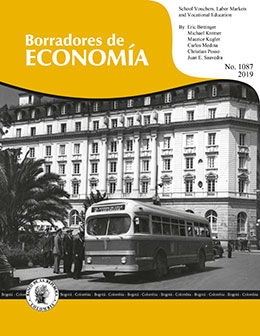
We provide evidence on the long-run impact of vouchers for private secondary schools, evidence collected twenty years after students applied for the vouchers. Prior to the voucher lottery, students applied to either an academic or vocational secondary school, an important mediating factor in the vouchers’ impacts. We find strong tertiary education and labor market effects for those students who applied to vocational schools with almost no impact on those who applied to academic schools. The labor market gains for vocational students are strongest at the top of the distribution and null at the bottom of the distribution. We find additional long-run impacts on consumption, and teen-age fertility. The expected net present value of benefits to participants and to taxpayers was large and positive implying that the program was welfare improving unless net externalities were large and negative.
En este trabajo estudiamos los impactos de largo plazo del programa de becas PACES para educación secundaria privada, para alumnos de bajos recursos, utilizando información recolectada veinte años después de que los estudiantes aplicaran a la beca. Previo a la asignación aleatoria, los estudiantes debían escoger entre un colegio académico o vocacional, factor importante en el impacto de las becas. Encontramos fuertes efectos sobre la educación superior y el mercado laboral para aquellos estudiantes que aplicaron a colegios vocacionales y casi ningún impacto sobre aquellos que aplicaron a un colegio académico. Las ganancias laborales de los estudiantes vocacionales son más fuertes en la parte superior de la distribución y nulas en la parte inferior. Se encuentran impactos adicionales de largo plazo sobre consumo y embarazo adolescente. El valor presente neto esperado de los beneficios de los participantes y los contribuyentes fue positivo y de gran magnitud, lo que significaría mejoras sustancialmente en el bienestar social, a menos de que existieran externalidades netas grandes y negativas.


